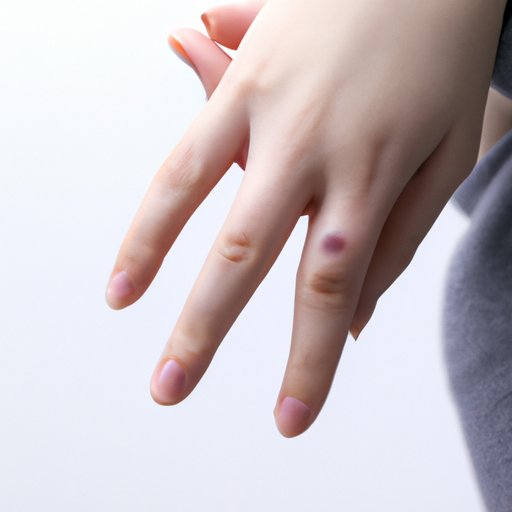I. Introduction
If you’ve ever noticed an unusual growth on your skin, you may have wondered if it is a wart. Warts can be unsightly and sometimes painful, so it’s important to be able to identify them and seek appropriate treatment. In this comprehensive guide, we will cover everything you need to know to identify a wart, including their appearance, location, symptoms, and how to seek medical advice.
II. General Information About Warts
Warts are non-cancerous, raised growths on the skin caused by the human papillomavirus (HPV). They come in various types, including common warts, plantar warts, flat warts, and genital warts. Warts can appear on any part of the body, but they are most commonly found on the hands, feet, and face.
To identify a wart, look for a small, raised growth with a rough surface that can be either round or irregular in shape. Warts are usually skin-colored or slightly darker and can grow up to half an inch in size. Some warts may have small black dots on the surface, which are the clotted blood vessels feeding the growth.
III. Visual Identification of Warts
The appearance of warts can vary depending on the type and location. Common warts on the hands are typically rough and irregularly shaped, while plantar warts on the feet may have a flat surface and can be painful to walk on. Flat warts on the face can be tiny and flesh-colored, often appearing in clusters. If you suspect you have a wart, it’s important to take a close look to identify its appearance to determine whether you need treatment.
Here is an illustration of what different types of warts can look like:

IV. Location on the Body
Warts can appear on any part of the body, but they tend to favor specific areas. Common warts are most likely found on the hands, while plantar warts occur on the soles of the feet. Flat warts tend to appear on the face, arms, and legs. Genital warts are found in the genital and anal area and are often sexually transmitted.
If you suspect you have a wart in a certain location, examine it closely so you can describe the wart’s location, size, color, and other identifying features to your healthcare provider.
V. Symptoms of Warts
In some cases, warts may not cause any symptoms and can go unnoticed. However, certain types of warts, such as plantar warts on the feet, can cause discomfort or pain when walking or standing. Warts on other parts of the body can itch or hurt when touched.
It’s important to pay attention to any changes in your skin and to seek medical advice if you suspect you have a wart or notice any other unusual growth or lesion on your skin.
VI. Contact with an Infected Person
Warts are contagious and can spread easily from person to person through physical contact or the sharing of personal items, such as towels or razors. If you’ve been in close contact with a person with warts, it’s important to inspect your skin carefully for any signs of warts. The incubation period of the virus varies, and warts can take weeks or even months to appear.
It’s important to practice good hygiene habits to prevent the spread of warts. Avoid touching warts on others and wash your hands regularly, especially after touching wounds or warts on your own body.
VII. Seeking Medical Advice
If you suspect you have a wart, it’s important to seek medical advice from a healthcare provider. Your healthcare provider can examine the growth and determine if it is a wart or another type of skin lesion. If it is a wart, there are various treatment options available, including topical medications, cryotherapy, electrocautery, and surgical removal.
To prevent warts, it’s important to practice good hygiene habits, keep your skin healthy, and avoid coming into contact with the virus. Warts may also be preventable through vaccination against certain types of HPV.
VIII. Conclusion
Warts can be unsightly and, at times, painful. However, with this comprehensive guide, you now have the knowledge to identify them so that you can take appropriate action to seek treatment and prevent their spread. It’s essential to pay attention to any changes on your skin and seek medical advice when necessary. By taking care of your skin and practicing good hygiene habits, you can reduce the risk of developing warts and other skin infections.
